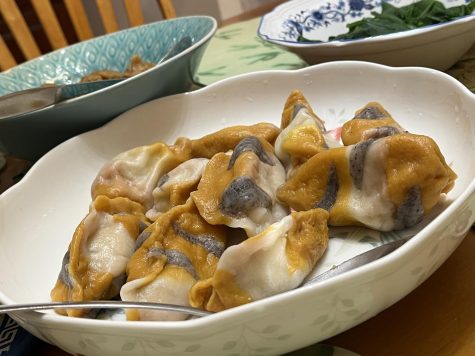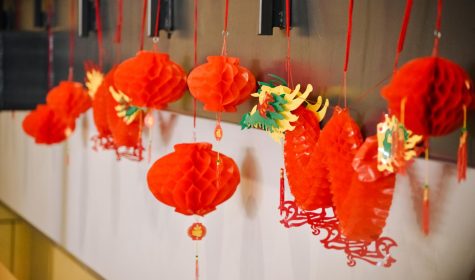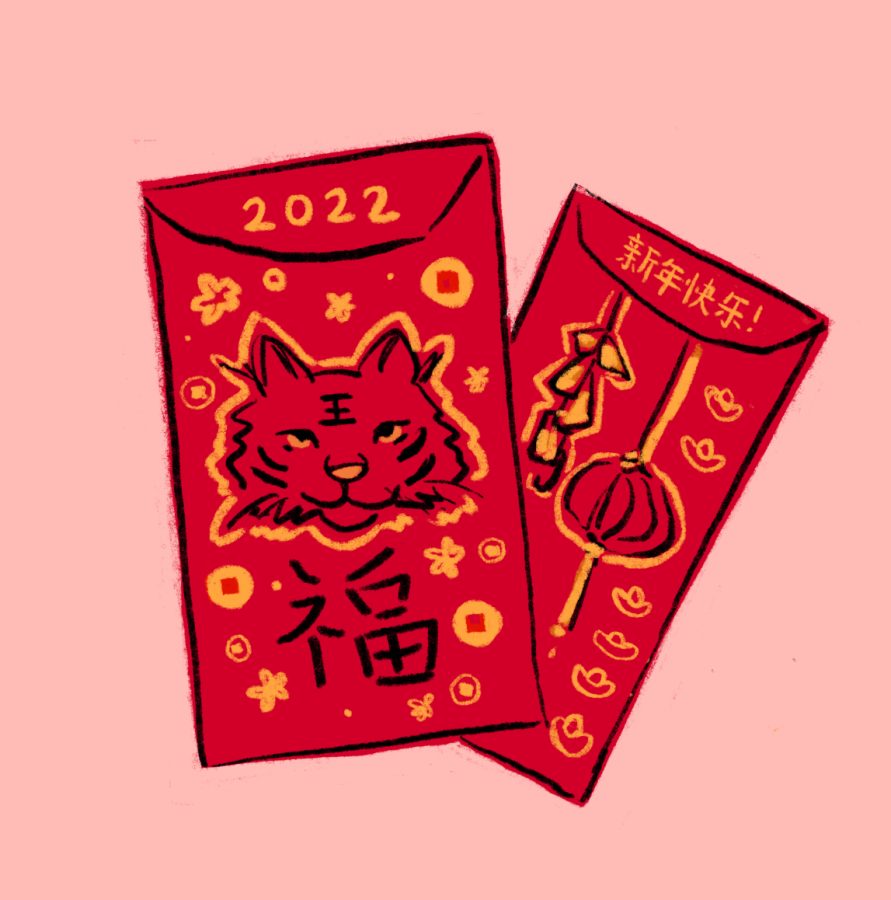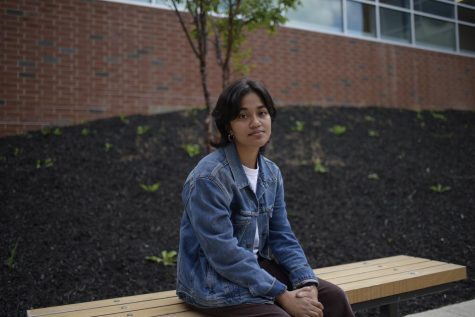Ringing in the Year of the Tiger: Students Share Their Chinese New Year Traditions
An illustration of hóng bāo, red envelopes filled with money that are often gifted to children during Lunar New Year. Graphic by Marissa Xu.
February 15, 2022
Lunar New Year is celebrated across East and Southeast Asia, with its roots in ancient legend. The story goes a bit like this: there once was a dragon, Nian, that terrorized townspeople. To scare him off, people threw firecrackers, launched fireworks, and lit red lanterns. Celebrations of Lunar New Year are now lush with dragons and red imagery, as over time, the dragon became a symbol of royalty and majesty, and red came to symbolize growth, renewal, happiness, and fortune. This year, the fifteen-day observance of Chinese New Year(often used synonymously with Lunar New Year, in the context of China) began on Feb. 1, 2022, and marked the start of the Year of the Tiger. Festivities now take place across the globe, and Chinese students at State High shared their families’ Chinese New Year traditions.
Food, as for most holidays, is a core part of Lunar New Year. The holiday is strongly tied to food, with many of the traditional dishes carrying deep significance. Jenny Li, a State High parent, explained some of the dishes commonly eaten during Chinese New Year, and the meaning behind them.
“First off, you have to eat fish,” Li explained. “So fish means it has to be a whole fish, not a filet or anything. So it has to have [the] head and a tail. That means you have extra. Abundance. Not only [do] you have enough, you have more than enough. You have extra.”
Senior Jadelyn Ding detailed how the idea of abundance came to be associated with eating fish.
“There’s this expression called niánniányǒuyú (年年有余). The character for yú (余) means something like a surplus of something, so the expression “年年有余” kind of means to have a ‘surplus’ of something every year, aka expressing to have another prosperous year,” Ding said. “The homonym is that 余 (yú), which is for a surplus of something, is pronounced the same as 鱼 (yú), which just means fish. So the expression 年年有余, which is about prosperity, sounds like 年年有鱼, which means to have fish every year.”
Many of the dishes eaten during Chinese New Year have double meanings as Ding described. Senior Marissa Xu described this concept a bit further, clarifying how the nature of the Chinese language lends itself to these double meanings.
“A lot of dishes and a lot of the traditions that they have are kind of double entendres. ‘Cause Chinese is a tonal language, like a lot of things mean the same thing. So a lot of the words [have] kind of a double meaning, and the double meanings relate to prosperity, wealth, growth, for the new year,” Xu said. “So dumplings—it says they mean wealth—because the shape looks like gold. The shape of dumplings looks like gold, so people eat dumplings for wealth.”
Along with fish, duck, chicken, spring rolls, egg rolls, rice cakes, and dumplings are typically eaten. With this year being the Year of the Tiger, senior Michelle Zhang’s family made tiger skin dumplings.

“My mom made hǔ pí jiǎozi (虎皮饺子/tiger skin dumplings)… She took dough and she made it orange with carrot juice and
black with sesame, so then she made dumplings that look like a tiger’s skin,” Zhang shared.
Apart from food, there are a number of other traditions practiced during Chinese New Year, ranging from decorations to television programs. Zhang thought back on her family’s Chinese New Year traditions and recalled memories of watching chūnwǎn, a popular New Year’s Gala that airs internationally.
“…the entire country watches it. It’s like this giant gala that goes on for many, many hours, and it’s just performances,” Zhang recalled. “They have talk shows, dance performances, martial arts, singing, magic shows, and it’s this very long thing. So I just remember that my family would watch that every year.”
Prior to the start of Chinese New Year, families clean and decorate their houses, often with lanterns or fai chun(door decorations) that have Chinese characters—typically fu(福) or chun(春)—written upon them. Fai chun are usually flipped upside down when they’re hung, the reasoning behind which Ding explained.
“The reason why we flip them upside down is because the Chinese expression for ‘(turning something) upside down’ sounds like the Chinese expression for ‘(something) has arrived,’” Ding said. “In other words, when we say ‘spring (turned) upside down’ or ‘fortune (turned) upside down’ in Chinese, it also sounds like ‘spring has arrived’ or ‘fortune has arrived’ in Chinese.”
But in recent years, with the increase in anti-Asian violence due to COVID-19, the presence of Lunar New Year has decreased, something senior Catherine Wang noted, as she found that businesses in State College weren’t decorating for Lunar New Year as they did in years past.
“Violence has increased over time, by I think 200%, even in 2020. Attacks on Asian Americans or people that look of Asian descent—the attacks on them have been growing up in numbers and increasing in violence,” Wang said. “So with the events of COVID-19, the presence of Lunar New Year has been decreasing. […] Maybe you would see a restaurant owner stick a Chinese New Year door decoration on, and now they don’t do that anymore, because they’re afraid that it’ll drive business down.”

But in spite of this, Wang, along with the Cultural Committee she heads at State High, set out to decorate the school for Lunar New Year, the motivation behind which Wang spoke about.
“Asian American activism has to be on the rise for us because we have to survive, right? And to survive we have to be active about our identity and stuff like that, or else we can’t live to our fullest extent. Especially with COVID-19 and the hate around it, we need to stand up for ourselves,” Wang explained.
Beyond the effects of COVID-19, Wang was also motivated by the lack of recognition of Lunar New Year in the district. In all her years in the district, Wang never once heard any mention of Lunar New Year in her classes.
“I was in SCASD since kindergarten, so not seeing my—like this important and impactful holiday not being even recognized or said by any of my teachers, or having any of my peers say anything about it, really hurts,” Wang said. “It’s such a mental divide between my home life and my school life when it should not be. Yeah, because I want to thrive both at home and at school.”
In putting Lunar New Year decorations up around the school, Wang found that they were able to bring the school community together.
“I’ve had teachers come up to me and say ‘Thank you for doing this, it’s not my culture, not my holiday, but I really want to make other people happy.’ I think that making these decorations and putting them up is also—it brings a community together, as well,” Wang said.
The fifteen days of Lunar New Year will come to a close on Feb. 15. For more information on Chinese New Year, click here.


